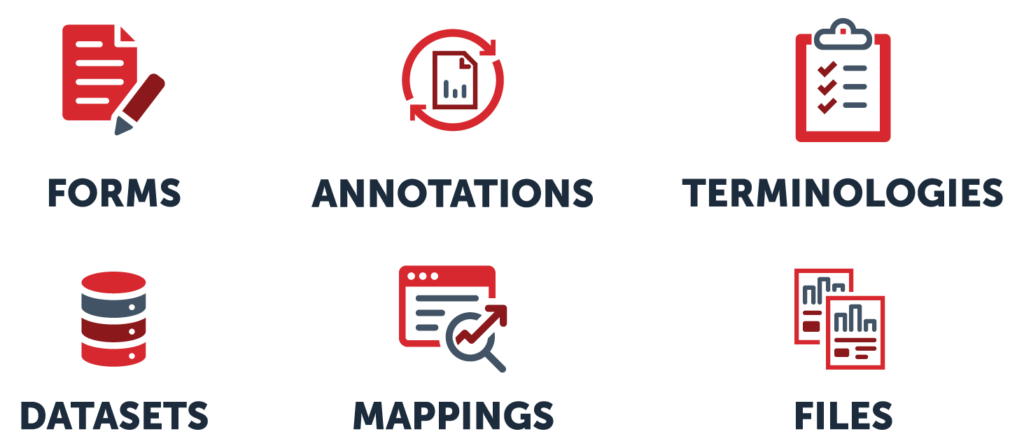Many companies in the life sciences industry are slow to adopt new technologies. This is often down to budget restrictions, greater operational burden, and uncertainty with meeting complex regulatory requirements.
However, there has been a lot of advancement in new and emerging technologies for automating clinical trials in recent years. The FDA has recognized the benefit of automation and is increasingly supportive of its use.
What is meant by automation in clinical trials?
By automation, we mean removing the need for manual processes such as creating case report forms (CRF) and annotations each time, manual data entry and manipulation, and time-consuming data validation processes.
Automation can be used to improve the accuracy of results in the clinical trial process, from study setup through to submission. It means simplified, more streamlined processes. The hard work is done for you automatically and often at the push of a button. It can also reduce the risk of human error. So that means less time and effort are required to get more accurate results.
How can you make automation work for you?
How can clinical trial automation make trials more efficient?
Clinical trial automation can help make trials more efficient in the following ways:
Clinical metadata management
Many organizations have managed their standards ‘manually’ in Word and Excel documents for many years. But this can result in confusion around where to find the latest version of standards, or how to make edits to standards, and inefficient (or non-existent!) change approval processes.
A Clinical Metadata Repository (CMDR) is a centralized platform that allows you to store, edit, and manage your study assets all in one place.

With a central repository of quality, approved assets, you’ll no longer have to recreate the wheel with each new study. CMDRs have governance built-in so you can have confidence you are using the right assets.
Read more about what you can do with a CMDR in our blog: What should a clinical metadata repository do?
Case report form development
CRFs are commonly used to collect clinical trial data. Rather than creating these assets in decentralized Word or Excel files, the process of can be automated using a CMDR. You can design your CRFs and see how forms will look for your EDC before study build. Validation is built-in so that forms are completed correctly, and standards are adhered to. Being able to edit and visualize forms and carry out stakeholder review within the platform shortens review cycles, accelerating study build and time to data collection.
Dataset conversion processes
During the various phases of a clinical trial, data must be submitted and resubmitted in the correct CDISC format to the FDA for review. Converting clinical trial data can be a time consuming and expensive process. By automating the dataset conversion process, there’s no need for complex programming. It’s also much easier to meet regulatory requirements, and it takes a lot less time to get clinical products to the market.
Validation of CRF and non-CRF data
The use of non-CRF or third-party clinical trial data is increasing. Provision of accurate, compliant clinical trial data is essential for submission to regulatory agencies like the FDA and PMDA. Which means there’s a requirement to validate both CRF and non-CRF data before submission.
Automated clinical data validation means conformance checks and performed in-stream – rather than at the end of the trial. With an automation platform, data issues are highlighted in real-time, so they can be fixed accordingly. So, you’ll know when your data doesn’t meet your own standards, or CDISC standards, and be able to correct any issues before submission.
Read more in our blog Why are Clinical Data Standards Essential for EDC and Non-EDC Data?
Five benefits of automating clinical trials
The five main benefits of automating clinical trials are:
- Faster clinical trials from start-up to completion.
- Save time, resources, and costs.
- Better quality data means more accurate clinical trials.
- Results can be compiled and analyzed faster.
- Better productivity throughout the clinical trial lifecycle.
These benefits mean there’s a much higher likelihood of successfully getting clinical products to the market on time and within budget.
Why automation in clinical trials is essential
Running clinical trials has never been more complex than it is today. There are greater amounts of data being collected and analyzed than ever before, there are more regulations in place, and data standards are constantly being updated.
The Pinnacle 21 Enterprise Clinical Data Management & Automation Suite incorporates automation into various areas of the end-to-end clinical trial process. It includes the automated processes discussed above and ultimately helps to get clinical products to the market faster. Book your free no-obligation demo of P21 Enterprise here >>
How you’re better off with Pinnacle 21 Enterprise
- Start trials in less than half the time
- Earlier informed decisions
- Superior data quality
- Improve compliance
- Maximize chances of submission approval
- Reduce costs & maximize profits
Ready to learn more about clinical metadata repositories? Why not download our free quick guide to implementing a Clinical MDR.



